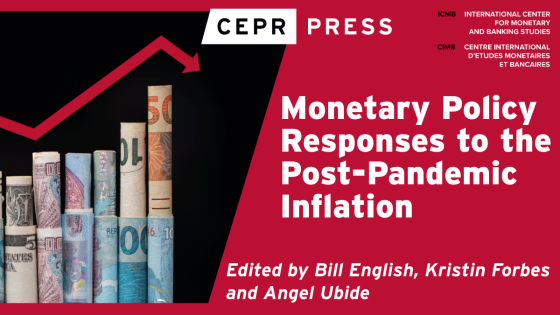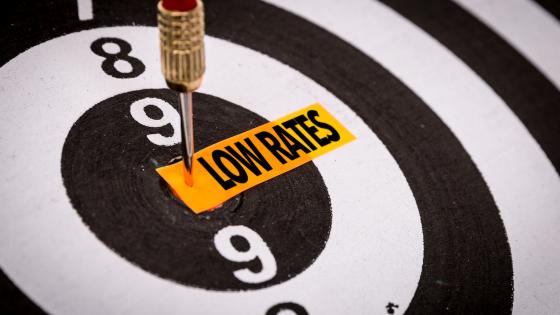Self-fulfilling sentiments and sovereign debt
A popular explanation for the sovereign debt crisis that has impacted European periphery countries since 2010 is self-fulfilling sentiments. If market participants believe that sovereign default of a country is more likely, they demand higher spreads, which over time raises the debt level and thus makes eventual default more likely. This view of self-fulfilling beliefs is consistent with the evidence that the surge in sovereign bond spreads in Europe during 2010-2011 was disconnected from debt ratios and other macroeconomic fundamentals (e.g., de Grauwe and Ji 2013). However, countries with comparable debt and deficits outside the Eurozone (e.g., the US, Japan or the UK) were not impacted. This difference in experience has often been attributed to the fact that the highly indebted non-Eurozone countries have their own currency (see, for example, Krugman 2013). A central bank has additional tools which can avoid self-fulfilling debt crises. In fact, the decline in European spreads since mid-2012 is widely attributed to a change in ECB policy towards explicit backing of periphery government debt.
While it is certainly possible for a central bank to adopt a policy that avoids a self-fulfilling default equilibrium, such a policy needs to be credible. If it is credible, it would not even be necessary to actually implement the policy. The bad equilibrium is avoided altogether. A central bank could always surprise debt holders by creating inflation or could buy large amounts of government debt by printing money. But how high should inflation be? And how easy is to create surprise inflation when prices are rigid? If the required inflation is too high, investors will not believe in such a commitment and the ‘bad’ equilibrium could not be avoided. In the end, this is a quantitative question that requires a reasonably realistic model.
Can central banks avoid self-fulfilling debt crises: New evidence
In recent research (Bacchetta et al. 2014), we explore whether central banks can credibly avert self-fulfilling debt crises with either conventional or unconventional policies. Our starting point is the model of ‘slow-moving’ debt crises by Lorenzoni and Werning (2014). In this model, there is a range of debt values (the ‘multiplicity interval’) for which two equilibria are possible. In the bad equilibrium, although the government is initially solvent, the anticipation of a possible future default leads interest rates and debt to gradually rise over time, justifying the belief of ultimate default. The model connects closely to the recent experience in Europe, where sovereign default spreads rose over several years without setting off immediate default events. We incorporate this framework into a standard New Keynesian model and analyse the role of monetary policy in preventing debt crises. We first consider the role of conventional monetary policy. By lowering nominal interest rates, the central bank can avert a crisis through four channels. It can create inflation, which erodes the real value of the debt; it can lower the real interest rate in the short term, which lowers the government’s borrowing cost; it can stimulate output, which in turn boosts tax revenues; finally, it can earn seigniorage revenues.
Assuming reasonable parameters of the model and the debt maturity structure, we find that avoiding a crisis equilibrium is typically very costly. Our baseline parameterisation implies that a multiplicity interval occurs for initial debt between 79% and 146% of output. In the middle of the interval (debt at 112% of output) the optimal policy that avoids a self-fulfilling crisis implies that prices ultimately increase by a factor of 5 and the peak annual inflation rate is 24%. Figure 1 shows the optimal path of inflation over time. The initial level of inflation is low due to price stickiness. Even much higher inflation would be needed for initial debt closer to 146%. We find that this result is robust to significant changes in the assumed parameters. Avoiding self-fulfilling equilibria in general requires very steep inflation rates for a sustained period of time, the cost of which is likely to be much larger than that of allowing the government to default. Consistent with the literature (for example, Reis 2013), we find that the impact of seigniorage is small, as is the impact of the ‘output’ channel.
- Therefore, although it is theoretically possible to make debt sustainable through very expansionary monetary policy, the implied inflation is likely to be so high that this policy is not credible.
Figure 1. Optimal Inflation Path (APR)

Next, we consider unconventional monetary policy in the context of a zero lower bound. We consider both a liquidity support policy, whereby the consolidated government issues monetary liabilities instead of new debt, and a debt buyback policy, where existing government debt is replaced with monetary liabilities. An important advantage of such policies is that, in contrast to government debt, there is no payment of default premia on monetary liabilities. In the Lorenzoni Werning framework, it is the payment of default premia over a long period that triggers the excessive debt accumulation that eventually leads to default. However, these policies imply that the nominal interest rate is kept at zero lower bound until the crisis is resolved.
- We find that these policies can only be effective if the economy is at a structural zero lower bound, where the natural real interest rate is zero or negative, for a sustained period of time. Otherwise, keeping the nominal rate at zero for an extended time when the natural rate is positive would generate deflation.
In addition to being very costly for the economy, a deflationary policy, by increasing the real value of the debt, might also fail to achieve the objective of averting a crisis.
Concluding remarks
Given these results, one might wonder why Draghi’s ‘whathever it takes’ announcement in 2012 has been effective in reducing spreads. Our perspective is that the ECB can easily replace safer core countries’ government debt with risky periphery government debt with no implications for monetary policy. This is possible because the stock of existing central bank assets is large compared to the level of risky government debt. This is however a case that is special to the periphery of a monetary union. The ECB would be powerless if there were a broad sovereign debt crisis across the Eurozone, in the same way that the Fed or Bank of Japan would be powerless to credibly avoid a self-fulfilling debt crisis in their countries.
Overall, our conclusion is that the ability of the central bank to avert a debt self-fulfilling debt crisis is limited. While in theory there are policies that could make the public debt level sustainable, our quantitative analysis shows that central banks usually cannot credibly commit to such policies.
References
Bacchetta, P, E Perazzi and E van Wincoop (2015), “Self-fulfilling Debt Crises: Can Monetary Policy Really Help?” CEPR Discussion Paper No. 10609.
de Grauwe, P and J Ji (2013), “Self-Fulfilling Crises in the Eurozone: An Empirical Test,” Journal of International Money and Finance, 34, 15-36.
Krugman, P (2013), “Currency Regimes, Capital Flows and Crises”, IMF Mundell-Fleming Lecture.
Lorenzoni, G and I Werning (2014), “Slow Moving Debt Crises,” working paper, Northwestern University.
Reis, R (2013), “The Mystique Surrounding the Central Bank's Balance Sheet,” American Economic Review, Papers and Proceedings 103(3), 134-140.






